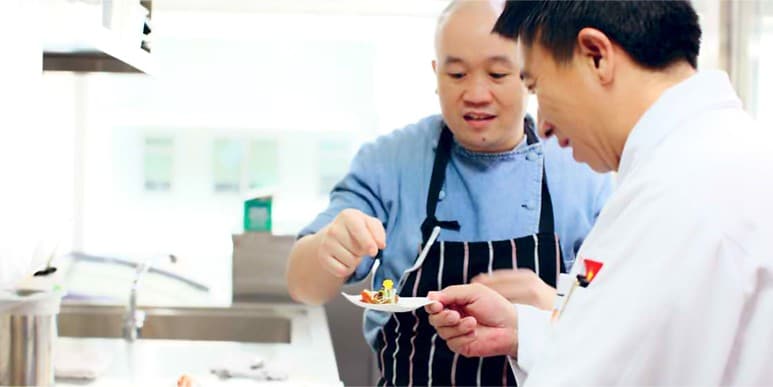The Key to Creating Compelling Dishes
Appeal with dishes that exude exquisite appearance, taste, smell, texture and consistency.
Top chefs know that it’s vital to continuously improve on their existing dishes, while creating new ones to keep the menu exciting. There are no shortcuts to creating a great menu; it all begins with a proper, thorough evaluation process. This way, you can always find ways to improve current offerings while cooking up new recipes. Today, we’ll walk you through a complete sensory evaluation process that you can use to enrich your menu.

Part 1: Plan your menu evaluation
Set your criteria
The quality of your restaurant is determined by the quality of your food. Keep this in mind and set high standards for your evaluation criteria. Make sure you are your own harshest critic, not your customers.
Prepare your food samples
Ensure your food samples are prepared in the exact same way they would be prepared in your restaurant. This means using actual portion or batch sizes and utilising the same equipment and process as if you were preparing the dishes for a restaurant full of guests. This lets you observe production issues as well as noting if consistent quality can be maintained when prepared in bulk.
Control the factors
To ensure accuracy when evaluating your food, be sure you (and other evaluators) are:
- Not hungry
- In a venue that is well-lit and well-ventilated (to appreciate the food’s appearance and prevent smells from various dishes mixing)
- Avoiding smoking, drinking coffee or chewing gun at least an hour before the evaluation
- Only evaluating a limited number of dishes

Part 2: Performing a sensory evaluation
Every amazing dish is made up of an ideal combination of elements, including:
- Appearance
- Taste
- Smell
- Texture
- Consistency
Let’s take a closer look at each component, and how to evaluate each area properly.
Appearance
This category refers to the visual appeal of a dish (including the way it is presented). The factors for consideration should include:
- Colour combinations
- Sizes and shapes of ingredients
- Overall visual attractiveness
- Signs of freshness
Smell
Our sense of smell plays a large part in the way we perceive flavours. Smells or aromas vary in strength, and can be described in many ways, including (but not limited to):
- Tangy
- Herby
- Earthy
- Fruity
- Floral
When evaluating the smell of a dish, you should place the sample at least one inch from your nose before breathing in.
Taste
A dish’s taste comes from its combination of flavours, as well as its serving temperature. To fully appreciate the taste of a dish, we recommend:
- Taking a small bite
- Chewing slowly
- Allowing yourself to experience how the flavours pair with one another, noting the intensity of each flavour
- Recording comparisons and observations within 10 seconds after tasting (for easy recall)
When you have completed your evaluation, spit out the sample and rinse your mouth with water. Leave a 2-minute window between each sample tasting, as this will allow for a more accurate evaluation.
Texture and consistency
This covers all the physical qualities you can feel with your finger, tongue, palate or teeth. When evaluating the texture of food, chew slowly and take note of the various characteristics in each mouthful. Be sure to watch out for when a dish is especially grainy, hard or even sloppy.

Part 3: Going beyond the senses
Aside from elements of the sensory evaluation mentioned above, you should also consider the practical factors involved with producing each dish, such as:
- Ingredients used
- Cooking methods
- Ingredient costs
- How a dish will fit into your existing menu
By conducting comprehensive evaluations on your food, you can make sure your dishes continue to meet and exceed diners’ high expectations – and ensure success for your kitchen and business.
Back to CHEF LIFESTYLE & TIPS
Related Articles
What you'll get:
- Access to free Chef trainings
- The best recipes and tips from Chefs around the world
- The latest culinary trends